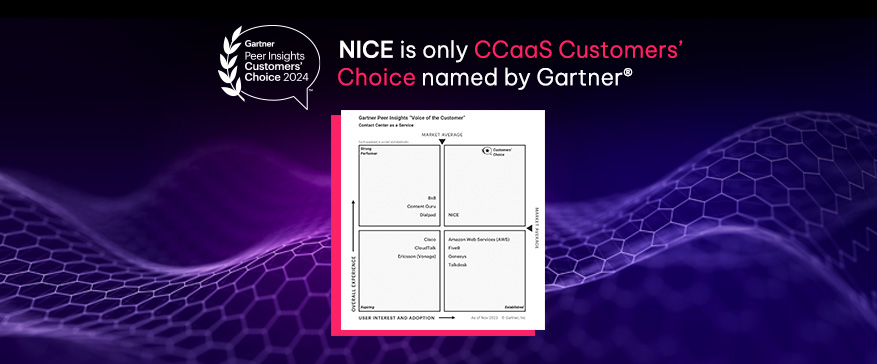Schedule adherence is a workforce management metric that describes how effectively an agent follows their schedule. Real-time adherence shows what an agent is currently doing versus their schedule, whereas historical adherence reports look at an agent’s adherence over a given period.
Adherence is critical to both the customer and the employee experience. High rates of
schedule adherence ensures calls are answered quickly, customers are well served, and employees are able to take well deserved breaks as scheduled.
Yet schedule adherence has gotten complicated. Contact center operations are increasingly complex, and customers expect omnichannel, 24/7, personalized support. While speed is king, some calls may far exceed average handle time (AHT) standards and span multiple channels in ways that disrupt a one-size-fits-all schedule.
In response, contact center leaders have traditionally managed disruptions like this by entering “exceptions” into their workforce management systems to account for unplanned, out-of-adherence behaviors. However, this is an outdated practice for several reasons:
- The workforce management team is wasting precious time and leadership resources by manually entering exceptions to improve adherence scores.
- Many contact centers report that their agents learned how to manipulate the system, and hide behind exceptions that shouldn’t have been excused.
- Exceptions can mask problematic behaviors and allow for unchecked performance and service violations.
- Exceptions don’t improve adherence or productivity. In fact, because exception codes can be manipulated to hide work avoidance, they may actually be making matters worse.
As a business transformation consultant for NICE, I work with companies ready to do away with outdated adherence practices in order to improve customer and employee experiences. Instead of entering exceptions, I support contact centers as they optimize the NICE Workforce Management (WFM) suite to adopt a new philosophy of managing adherence from a
results perspective. Here’s what that looks like in practice:
By making this shift in philosophy and practices regarding adherence the companies I work with are finding it easier to meet service level agreements (SLAs), and are seeing gains in productivity, efficiency, and customer satisfaction.
However, updates to adherence practices should be introduced thoughtfully to ensure sustained value. Companies I work with have found success across a three-part,
listen-pilot-rollout, launch plan.
Phase 1: Listen
Before an external launch, contact centers should conduct at least 30 days of observation to establish a baseline of current behaviors. During this silent observation phase the new adherence system should be running in the background without many exceptions.
During this period, we recommend contact centers host several meetings to review reporting and to allow supervisors and the NICE WFM team to ask questions. This is the time to decide on the pilot group, define the change management plan, audit and simplify activity codes, and determine which exceptions are still required to be entered and/or automated for approval.
Lastly, we recommend contact centers determine their adherence goal based on observation data and adherence exception thresholds during the listening phase. At NICE we recommend setting an aggressive goal to start: It’s always easier to decrease a goal later but raising it can be painful.
Phase 2: Pilot
Allow for a minimum of two weeks for an implementation pilot where final tweaks can be made based on important questions. Are your adherence goals reasonable? Are your thresholds and automated exceptions helping or hurting your leader’s ability to identify and coach for problematic behaviors? Where is additional training needed based on high-risk behaviors?
The previously identified pilot group should start planning the communication strategy and rollout plan. Consider conducting focus groups with agents, supervisors, and NICE WFM staff mid/post-pilot phase to determine lessons learned, update training documents and plans, and to adjust the final adherence goal with exceptions considered.
Phase 3: Rollout
Plan for a full 30-day rollout focused on training. Training should arm contact center leaders with the information and skills needed to convert new adherence reporting into actionable management and coaching opportunities. Thereafter, weekly meetings with supervisors and the NICE WFM team are recommended for the first 90 days to review agent performance and management outcomes.
Agent performance should be managed by supervisors during this time to maintain productivity, but manual exceptions are not advisable. It is only by eliminating exceptions that leaders can see how the performance behaves naturally. However, if exceptions pop up, or significant changes are made to the adherence goal, consider adding an additional two weeks to the rollout period to observe the impact and adjust as needed.
It is recommended that all remaining exceptions be automated through NICE Employee Engagement Manager (EEM). With NICE EEM most if not all exceptions that are deemed necessary can be automated without manual approval or intervention.
And don’t forget, communication is critical. Check in weekly or biweekly during the first month to share best practices with the business. Once the full rollout is complete and your modern adherence system has launched, more proactive measures can be made to manage agent behavior, outliers, and business trends to better forecast and plan for the future.
Exceptional results with modern adherence
With modern adherence practices contact centers will enjoy a future with improved forecasting accuracy, boosted agent productivity, higher-value behavior management, and decreased manual labor.
Learn more about how NICE WFM is helping contact centers make exceptions the exception with exceptional results.









